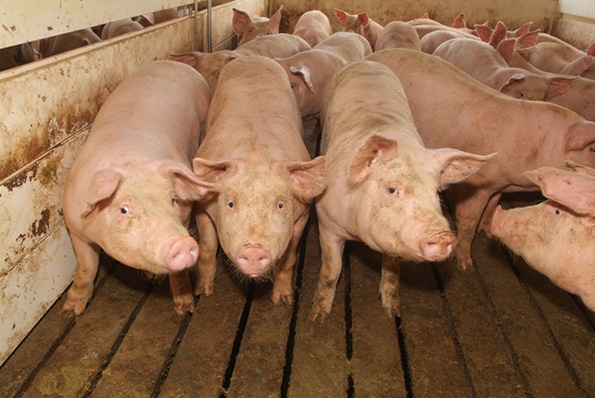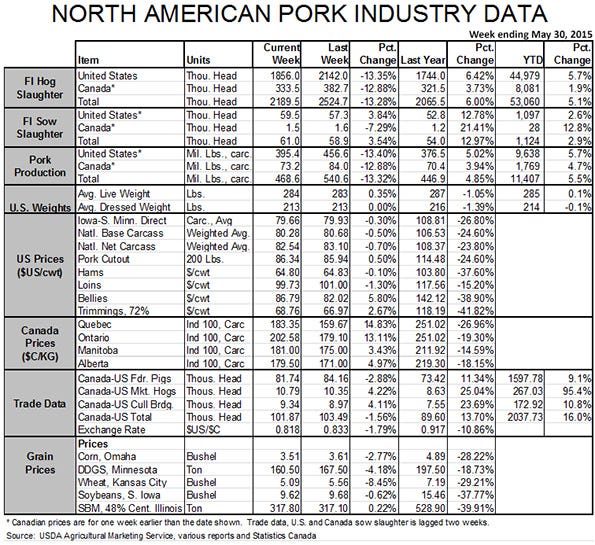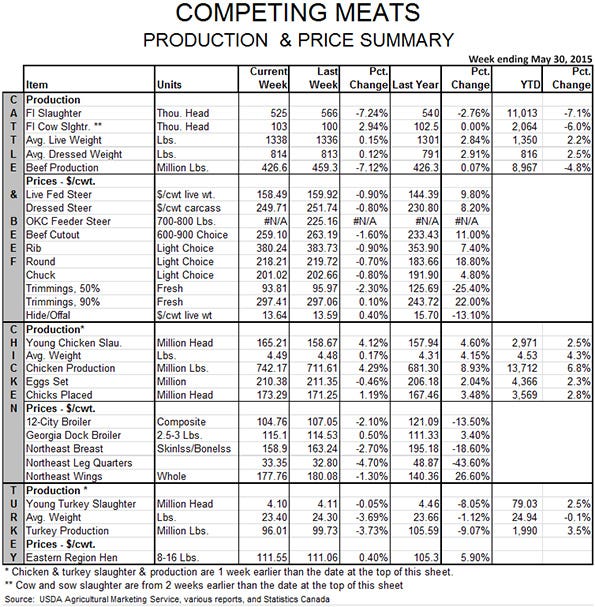Who will jump the ractopamine hurdle?
June 1, 2015

A hot topic at this week’s World Pork Expo will, no doubt, be ractopamine. A number of producers and packers have been looking at the efficiency-enhancing beta-agonist with skeptical minds and eyes recently as China has enforced its ban on product that contains ractopamine and effectively applied that ban to product entering Hong Kong as well.
First, let me be clear: ractopamine is an effective product that is safe. It enhances lean gain and rate of gain, improves feed efficiency and results in less waste nutrients. All of those reduce costs and, eventually, offer consumers a better value. As an efficiency enhancement, ractopamine also supports my belief that we should do everything to maximize efficiency because there are still billions of hungry people in the world and cost-efficient food production is a necessary step in alleviating that suffering.
But a major customer – that could become a huge customer – for U.S. pork has said “no thanks” to product that contains ractopamine. Further, they have developed sensitive tests and shown a willingness to use them regularly to find product that does contain the additive, causing a good batch of headaches for U.S. exporters. Many of us believed (and may still believe) that this ractopamine reticence by China is a not-so-thinly disguised trade barrier. And it may be.
It is clear that the Chinese population and Chinese government are very wary of food additives due to the abuses they have been subjected to by Chinese food manufacturers. A main reason China doesn’t allow ractopamine is that the government doesn’t trust their domestic producers to use it correctly. Too many of them ascribe to “If a little is good, a lot must be great” theory of production enhancements.
How is it any different?
Is this any different from domestic pork buyers who want Berkshire-sourced product? Non-gestation-stall pork? Never-been-fed-antibiotics pork? “Sustainable” pork – whatever that is?
But the challenges are larger than for those “niche” markets. First, producers will leave money on the table if they forego using ractopamine. Ron Plain at Mizzou estimates the value at about $4 per head. A ractopamine value calculator from Kansas State pegs the number at $2.50 per head given today’s lower feed costs and lower hog values, both of which reduce the value of ractopamine. There will be some market impacts from adoption (read below) but to get an individual producer to act, packers will almost surely have to guarantee that producers will be “made whole” for not feeding ractopamine.
Second, packers have found it difficult to run racto-free and racto-fed pigs through the same plant without getting cross contamination. I understand that some are getting that done now but it is still possible that entire shifts may have to be devoted to ractopamine-free pigs to ensure that there will be no residues in tests once product reaches China.
Finally, there will be a lot of product from these pigs that does not go to China. Chinese importers now buy normal wholesale cuts, not those frozen carcass halves and quarters that the Chinese government bought a few years ago. Can enough product be sold at high enough prices to China to justify that whole pig being less efficient?
So what might be the payoff?
First, U.S. supplies will decline as rates of gain fall and feed efficiency near market time declines. The first simply reduces pounds. The second reduces pounds even more as producers find those last few pounds of gain less profitable. The $2.50 per head from the KSU calculator is only 1.5% of the value of a pig at present. Assuming a price elasticity of -0.5, it would take only a 0.87% (1.9 pound) reduction in barrow/gilt carcass weights (with hog numbers held constant) to gain that 1.5% in revenue.
Second, exports to China would increase and pull U.S. prices higher. Dermot Hayes of Iowa State University determined from historical data that a 1,000 metric tons increase in monthly shipments to China was associated with a $0.55 per hundredweight increase in U.S. hog prices or about $1.10 per head. Since March 2014, the year-on-year decline in monthly exports to China has been just over 10,000 mt. Just getting that amount back would, by Hayes’ calculations, add $11 per head to the price of all U.S. pigs.
So what is the catch?
The biggest one is the age-old problem of economics: Free riders. If you give up ractopamine so your packer can ship more product to China, I will benefit from the market impacts and still get to keep my $2.50 in ractopamine value. In fact, I’ll get more because the value of ractopamine will grow and pig price increases. Does that mean you and your packer shouldn’t make the switch? No. You both will still be better off. But it makes it more difficult knowing that someone else may actually benefit more from your decision.
This is a tough call and I’m not going to make it for anyone. It’s your decision – along with your packer – on whether you want to change your production method so your product can clear this hurdle. Is the hurdle reasonable? Probably not, but it is there. Who, if anyone, will jump it?

About the Author(s)
You May Also Like





